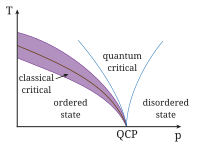Fermi liquid theory

Imagine you have a big bucket of water and a bunch of toys that are floating around in the water. This bucket represents a material called a metal and the toys represent tiny particles called electrons that move around inside the metal.
Now, if you take one of the toys (electrons) and try to move it around, it's going to bump into the other toys (electrons) and slow down. But, if you try to move a group of toys (a.k.a. a bunch of electrons), they can kind of stick together and move around more easily.
This is similar to what happens with electrons in metals. When electrons move around in a metal, they can kind of stick together and move in groups, which allows them to move around more easily. Fermi liquid theory is a way to understand how electrons act when they're moving as groups in metals.
Scientists use math and fancy equations to study this behavior, but basically, they're looking at how the electrons interact with each other and with the metal they're in. They can predict things like how much energy is needed to add or remove an electron from the metal or how fast the electrons can move through the metal.
Overall, understanding Fermi liquid theory helps us understand how metals work and how energy and electricity move through them.
Now, if you take one of the toys (electrons) and try to move it around, it's going to bump into the other toys (electrons) and slow down. But, if you try to move a group of toys (a.k.a. a bunch of electrons), they can kind of stick together and move around more easily.
This is similar to what happens with electrons in metals. When electrons move around in a metal, they can kind of stick together and move in groups, which allows them to move around more easily. Fermi liquid theory is a way to understand how electrons act when they're moving as groups in metals.
Scientists use math and fancy equations to study this behavior, but basically, they're looking at how the electrons interact with each other and with the metal they're in. They can predict things like how much energy is needed to add or remove an electron from the metal or how fast the electrons can move through the metal.
Overall, understanding Fermi liquid theory helps us understand how metals work and how energy and electricity move through them.
Related topics others have asked about:
